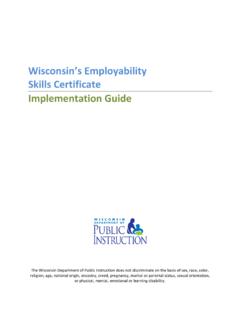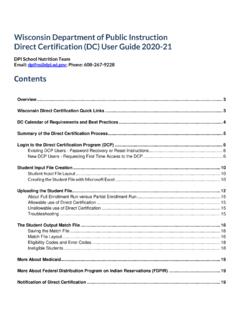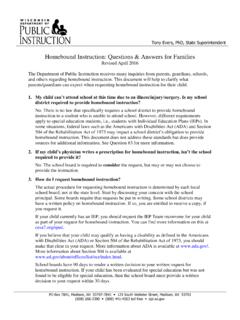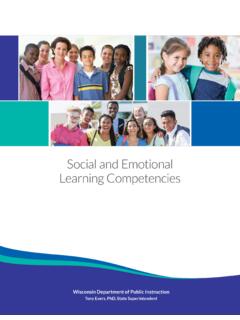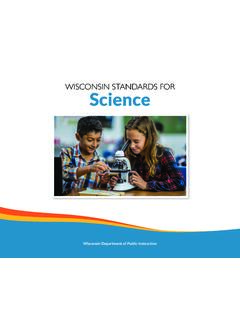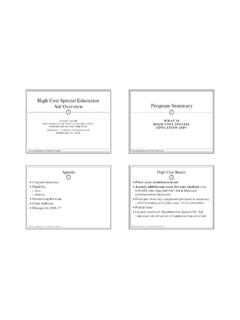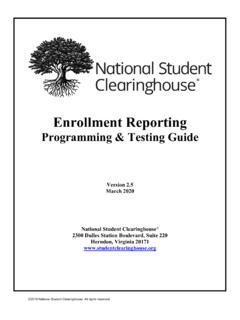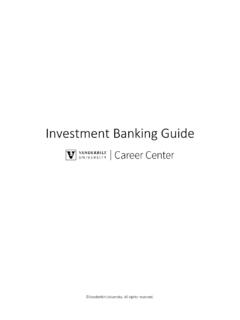Transcription of Guide to Wisconsin's Child Labor Laws
1 WISCON SIN D EPARTMENT OF WORK FORC E D EVELOPMENT. Guide to Wisconsin's Child Labor laws For All Youth under 18 years of Age For questions related to Child Labor laws , contact the wisconsin Department of Workforce Development, Equal Rights Division, Labor Standards Bureau at (608) 266-6860. Information for: Employers Minors Parents School Administrators, Counselors, and Faculty Work-based Learning Coordinators Workforce Investment Professionals ERD-17231-P (N. 7/2012). Child Labor Law Guide PAGE 2. Table of Contents Introduction 3. Definitions 5. Work Permits 11. Liability and Insurance 13. Hours and Wages 16. Employment/Equipment Restrictions 18. References 63. Acknowledgements: We would like to acknowledge Sara Baird, Jim Chiolino, Jeff Hicken, Steve Laesch, Beth Lewis, Robin Kroyer-Kubicek, Kevin Miller and Amy Phillips for their time and contributions in the development of this document.
2 Furthermore, we are grateful to the Suttle-Strauss Printing Company, Waunakee, wisconsin , and the Scot-Forge Com- pany, Clinton, wisconsin , for providing invaluable support by giving the team the opportunity to view processes and equipment in action. Child Labor Law Guide PAGE 3. INTRODUCTION. As educators, community members, and employers working with mi- nors, we have a responsibility to provide all youth with the education and experiences that will prepare them to be college- and career-ready. For- tunately, for some, that includes opportunities to apply work or class- room learning in other environments. Our primary concern, whether minors are learning in school or out of school, is that our children are safe. Child Labor laws have developed over time to ensure that youth are not exploited in work environments and that they are afforded specific protections.
3 This guidance document has been produced by a team from the Wis- consin Department of Workforce Development (DWD) and the Depart- ment of Public Instruction (DPI) to assist schools and employers who hire youth. It is the primary responsibility of the DWD Equal Rights Division, Labor Standards Bureau, to issue permits and enforce the Child Labor laws in the State. This Guide is meant to be used as an interpretive aide and is not meant to replace wisconsin Administrative Chapter DWD. Code 270 or cover all possible scenarios or exceptions. Furthermore, this Guide does not constitute a legal document which can be asserted as evi- dence in a court of law. Rather it is intended to provide assistance for those with common questions about interpreting the Child Labor law stat- utes and administrative regulations.
4 Child Labor legislation purpose The purpose of Child Labor legislation is to protect the life, health, safety, and welfare of minors. The goal of modern Child Labor laws is to prevent through regulation rather than to award damages or penalties after an injury or violation occurs. Through the regulation of Child Labor , with emphasis on preventive rather than punitive action, we go far in meeting this goal. Legal age The age of a Child bears on what type of work he or she may lawfully perform. Experience has shown that it is not safe to employ minors based upon their own representations of their age, or even upon the repre- Child Labor Law Guide PAGE 4. INTRODUCTION. sentations of their parents. Thus, DWD requires certain legal proof of age before issuing permits.
5 Worldwide experience has shown that this burden is necessary to en- sure Child safety. Interestingly, nearly all states have Child Labor work permit requirements. Federal versus wisconsin Child Labor laws The Department of Labor and wisconsin both establish Child Labor laws as they apply to hours of work, types of jobs, and working conditions. Within any state law, there may be some provisions that are more or less restrictive than provisions of the federal law. Which law applies?: There is often overlap in coverage between the state and federal Child Labor laws . All wisconsin employers are required to follow the wisconsin Child Labor laws . Most businesses are also required to follow the federal law as well. If both apply, the more stringent standard of the two applies.
6 This program [Youth Apprenticeship] is the single most effective use of taxpayer dollars to link our business community to the workforce and training needs of the community.. Kent Olson, Olson Tire & Auto Service Child Labor Law Guide PAGE 5. DEFINITIONS. The following definitions will be helpful as you examine Child Labor law practices. Day A calendar day, except when a work shift continues into the next cal- endar day, all hours in the shift count for the day the shift began. Employee Employee means any person who may be required or directed by any employer, in consideration of direct or indirect gain or profit, to en- gage in any employment, or to go or work, or be at any time in any place of employment. Employment According to Wis.
7 Stat. (7), any trade, occupation, or process of manufacture, or any method of carrying on such trade, occupation, or process of manufacture in which any person may be engaged, except in such private domestic service as does not involve the use of mechanical power and in farm Labor . In laymen's terms, any person directed by an- other or by an agency/company to provide services in consideration of direct or indirect gain or profit. Hazardous Employment Occupations or tasks which are found to be dangerous or prejudicial to the life, health, safety, or welfare of minors or other employees or fre- quenters. Intern/Trainee Certain work activities performed by students as an extension of their academic programs. The training is academically oriented for the benefit of the student, and no employer-employee relationship exists.
8 If all six criteria listed below apply, the trainee or student is NOT em- ployed: Child Labor Law Guide PAGE 6. DEFINITIONS. The training, even though it includes actual operation of the facilities of the employer, is similar to that which would be given in a vocational school;. The training is for the benefit of the trainees or students ;. The trainees or students do not displace regular employees, but work under their close observation;. The employer that provides the training derives no immediate advantage from the activities of the trainees or students , and on occasion the employer's operations may actually be impeded;. The trainees or students are not entitled to a job at the comple- tion of the training period; and The employer and the trainees or students understand that the trainees or students are not entitled to wages for the time spent in training.
9 OTHERWISE, the trainee or student will be regarded as an employee and must be paid. See Wage and Hour Division Fact Sheet 71: internship Programs Under the Fair Labor Standards Act.. Job Shadowing Job shadowing is typically a part of career development activities in late middle and early high school. A student follows an employee at a business for a few days to learn about a particular occupation or industry. Job shadowing can help students explore a range of career clusters and select a career pathway for the latter part of high school. students do not perform productive work and are not paid for the experience. There is no employer/employee relationship. This is a short-term, school-supervised workplace learning opportunity, with an emphasis on exploration, not work.
10 Minor Any person under the age of 18. Different rules may apply for minors aged 12-13, 14-15, or 16-17 depending on the work performed. Child Labor Law Guide PAGE 7. DEFINITIONS. Overtime Minors 16 or 17 years of age are entitled to time and one-half the regular rate of pay if they work longer than 10 hours in a day or 40 hours in a work week, whichever is greater. Wis. Admin. Code DWD (1)(c)5. Parent-Owned Business Children 12 years of age or older are permitted to work at any gainful occupation under the direct supervision of their parent or guardian in connection with the parent's or guardian's business, trade, or profession, provided the employment or place of employment is not deemed hazard- ous. Student Learner students are enrolled in school in a school-work training program sponsored by an accredited school, the technical college system board, or DWD's youth apprenticeship program and receive school credit for pro- gram participation.

